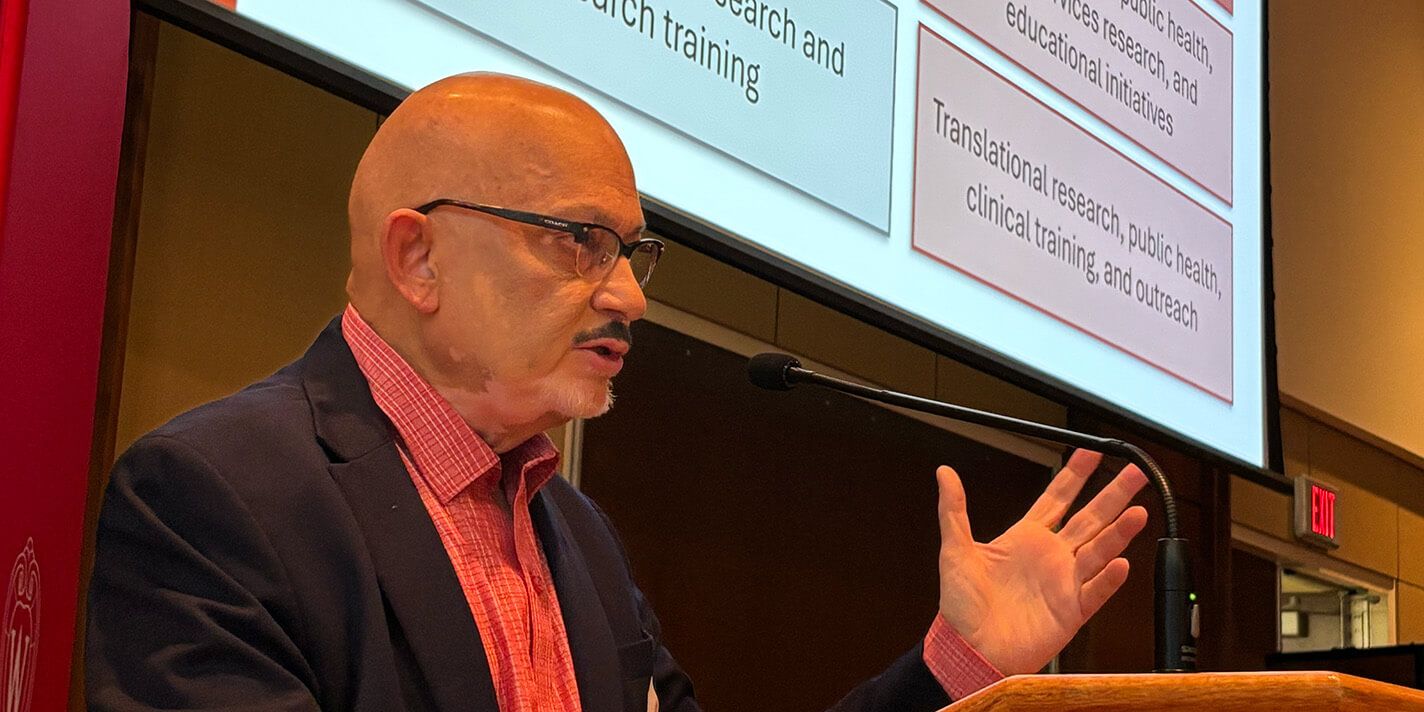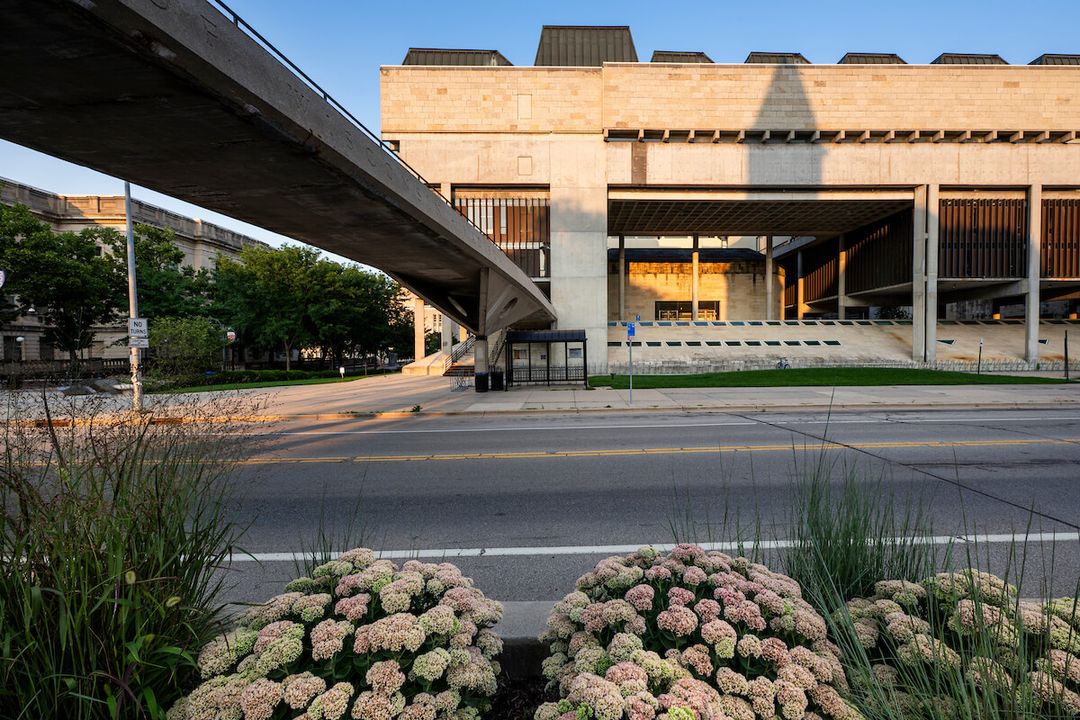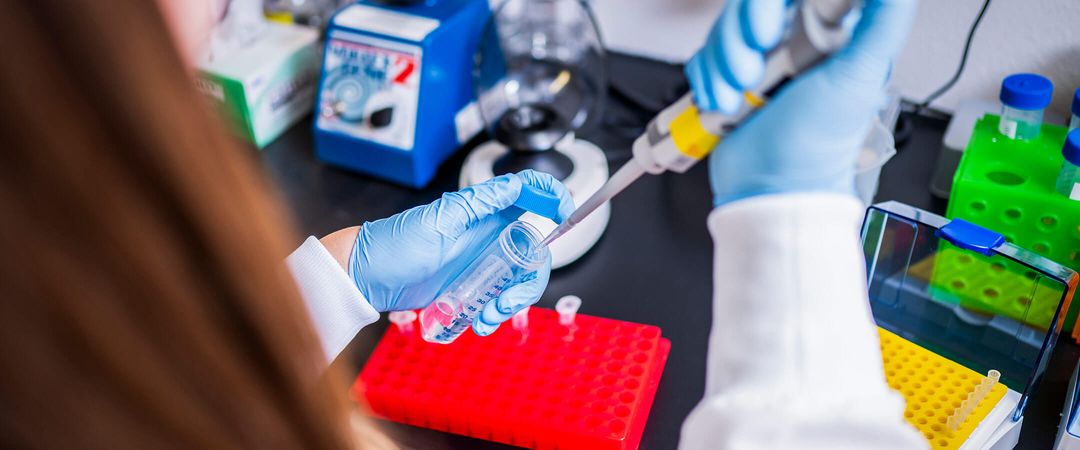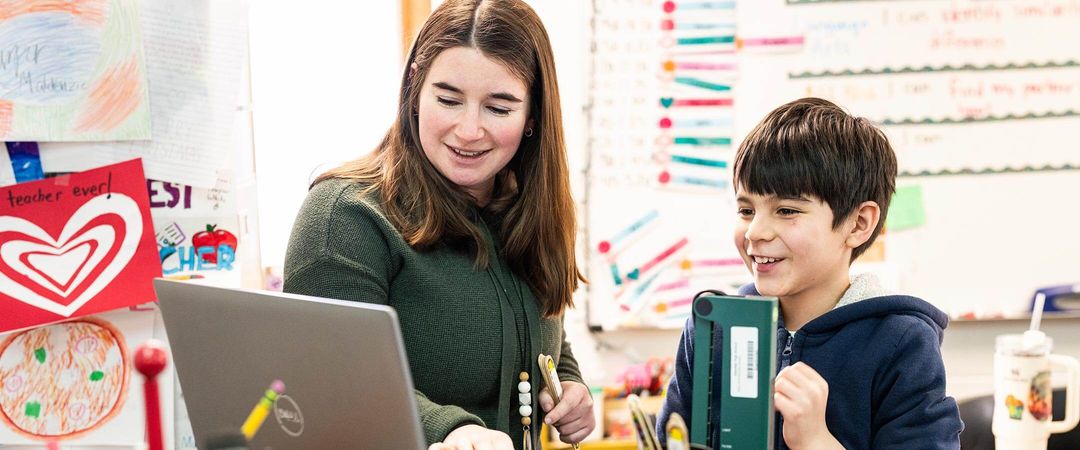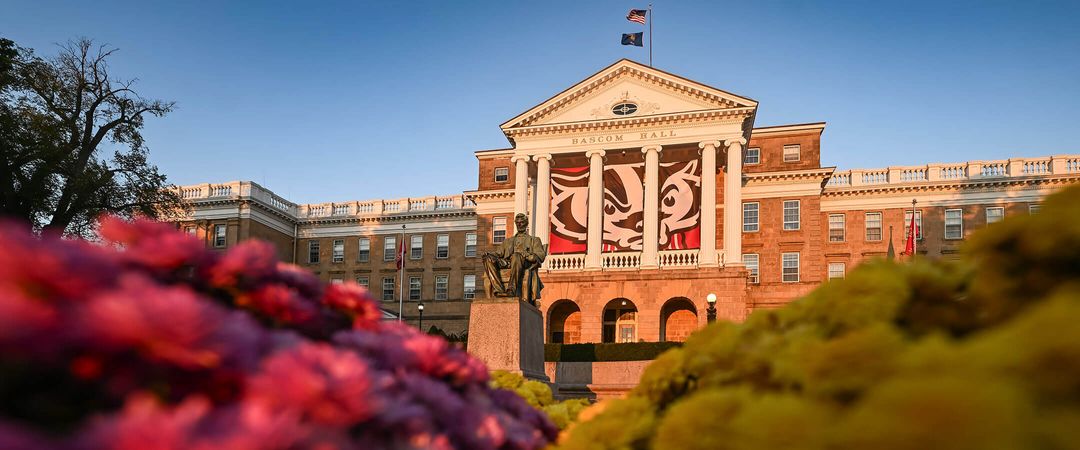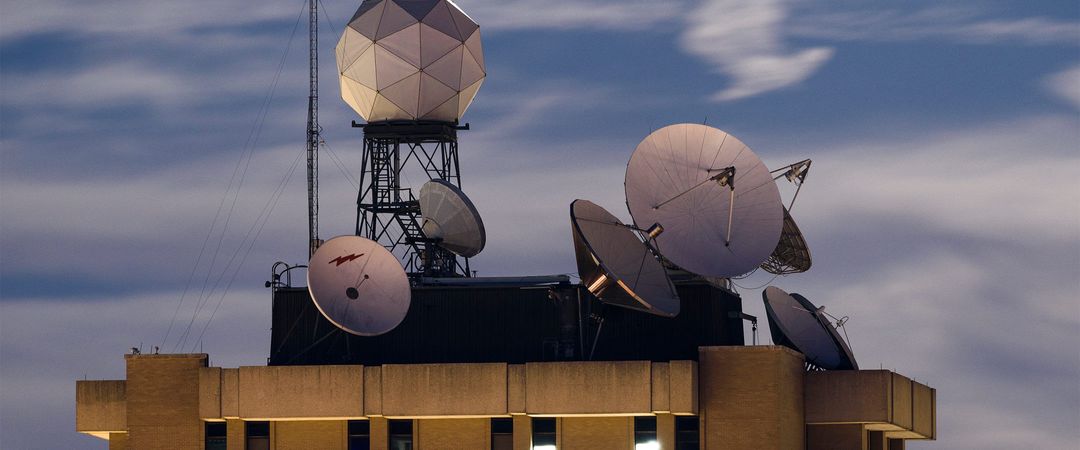On a damp November Saturday, just hours before the Badgers took on Washington at Camp Randall (Badgers winning 13–10!), passionate Wisconsin alumni and friends of the university gathered at Union South for the Wisconsin Foundation and Alumni Association’s Fall Policy Forum. The event, a revival of the organization’s former Badger Action Network gatherings, brought together university leaders, renowned researchers, and engaged alumni to discuss a critical issue facing higher education: the impact of federal and state funding on research and innovation.
“We assume you all have an interest in public policy, and we’re going to spend a little time with two really outstanding areas of our university,” said Mike Fahey, managing director of state and university relations at the Wisconsin Foundation and Alumni Association, as he welcomed attendees to the forum.
Navigating Uncertain Waters
Craig Thompson, the UW–Madison’s vice chancellor for university relations, set the stage by outlining the challenging landscape facing the UW. Over the past 10 months, the university has seen approximately 150 federal grants terminated, with about 35 subsequently reinstated. Perhaps more concerning is the ongoing threat to facilities and administration rates — the indirect costs that support the infrastructure enabling research.
“If we just arbitrarily went to [a] 15 percent cap on those indirect rates, it would have a significant impact on this university,” Thompson explained. These rates, currently negotiated at levels significantly above 15 percent, support everything from research facilities and equipment to the professional staff who ensure compliance with safety requirements and protect human subjects in studies.
The economic stakes are substantial. For every dollar in state taxpayer support, UW–Madison generates $26 in return, creating an economic impact of nearly $31 billion for Wisconsin and supporting approximately 190,000 jobs statewide.
At the Forefront of Alzheimer’s Research
The forum’s spotlight on Alzheimer’s research revealed why UW–Madison stands among the nation’s elite institutions in this critical field. Led by a powerhouse team including Sanjay Asthana, associate dean for gerontology; Cynthia Carlsson, professor of medicine; and Sterling Johnson, a Vilas Distinguished Achievement Professor and the Jean R. Finley Professor of Geriatrics and Dementia, the university’s Alzheimer’s Disease Research Center is one of only 35 such centers of excellence funded by the National Institutes of Health (NIH).

Asthana painted a sobering picture of the disease’s impact: more than 7 million Americans currently have Alzheimer’s, with projections reaching 14 million by 2060. In Wisconsin alone, more than 135,000 people suffer from the disease, with the state spending over $28,000 per person annually in Medicare costs.
“We are perhaps at one of the most exciting and groundbreaking moments in Alzheimer’s research, and UW medicine is a key player in all the advances that have taken place in the field,” Asthana told the audience.
The program’s scope is remarkable: over 3,600 participants — including more than 1,100 in the Alzheimer’s Disease Research Center and 2,500 in the Wisconsin Registry for Alzheimer’s Prevention — come to Madison regularly to contribute to research. These represent two of the largest and longest-followed cohorts in Alzheimer’s research worldwide.
Recent breakthroughs have been significant. In May 2025, the FDA approved a blood test for Alzheimer’s, with 40 percent of the data reviewed coming directly from UW–Madison research. The university has also recruited world-leading experts on blood biomarkers for detecting neurodegenerative diseases.
“If someone just walks 30 minutes a day, five days a week, you’ll reduce your risk for Alzheimer’s by 40 percent,” Asthana shared, highlighting the power of lifestyle interventions. “There’s no pill that’ll reduce your risk for Alzheimer’s by 40 percent other than just simple exercise.”
Perhaps most exciting is the program’s focus on early detection. Researchers can now identify amyloid and tau proteins — the hallmarks of Alzheimer’s — up to 20 to 25 years before symptoms appear, opening the door to treatments that could prevent disease progression.
The Impact of Financial Uncertainty
However, this momentum faces serious threats. Johnson noted that three of the four quarters in 2025 have been affected by funding constraints, either through hiring freezes or slowdowns in federal awards. Although no major cuts have hit the Alzheimer’s program directly, significant slowdowns have affected momentum, and federally funded training initiatives to create a diverse workforce have been cut entirely.
The uncertainty extends beyond NIH funding. Carlsson described how pauses in funding from the Health Resources and Services Administration (HRSA) forced the program to halt dementia care projects temporarily, creating a stop-and-start pattern that undermines efficiency. The program’s innovative partnership with the Wisconsin Department of Health Services, which supports dementia care specialists in every county, has also faced funding delays.
“We’re at a very exciting time for Alzheimer’s research with new biomarkers and infrastructure to help bring those discoveries to clinical care,” Carlsson said. “But the federal and state funding pauses and the uncertainty have been leading to uncertainties about hiring new people, renovating labs, and moving forward with promising new initiatives.”
Entrepreneurship: Wisconsin’s Historic Legacy Continues
The forum’s second focus brought a different kind of energy as Jon Eckhardt, Pyle Bascom Professor in Business Leadership and special chancellor for entrepreneurship, shared the university’s ambitious plans to expand its entrepreneurial impact.
Eckhardt opened with a striking observation about the changing economy: “What is the economic power of one of my students when they rest their hands on a laptop?” He noted that it’s now common for students to build and sell businesses for $700,000 to $2 million while still in school or shortly after graduation — a dramatic transformation in how young entrepreneurs operate.
UW–Madison’s entrepreneurial roots run deep. In 1925, Harry Steenbock’s decision to give his vitamin D enrichment patent to the university rather than license it himself led to the creation of the Wisconsin Alumni Research Foundation (WARF) — literally the birth of academic entrepreneurship tied to universities in a formal way.
But today’s entrepreneurial landscape extends far beyond traditional technology transfer. Eckhardt’s research reveals that in a typical year, about 200 students are running companies while enrolled at UW–Madison, most unknown to the university. These range from simple ventures to sophisticated operations with teams of programmers and complex supply chains.
“In the end, all these companies are started by people,” Eckhardt explained. “Just like all of our other fields of study on our campus where we build systems to help people understand different fields of medicine and then pursue careers in that direction, we should do the same with entrepreneurship.”
The new Wisconsin Entrepreneurship Initiative takes a “founder-forward” strategy, focusing not just on managing technology patents but on recruiting, developing, and launching entrepreneurs across all schools and colleges. The approach is unique: rather than building another silo, the initiative aims to help programs across campus recruit students interested in entrepreneurship and support their development.
“We want to become a place for entrepreneurs to come and build their careers,” Eckhardt said, noting that currently only Stanford, MIT, Georgia Tech, and perhaps Babson actively recruit entrepreneurs.
The initiative also emphasizes geographic impact. Survey data show entrepreneurial talent emerging from most Wisconsin counties, creating opportunities to support company formation across the state. The program is partnering with venture capital funds and entrepreneurial communities in Green Bay, La Crosse, and Eau Claire to help students launch companies throughout Wisconsin.
“We are very much trying to get this off the ground, building systems to help people start companies across Wisconsin,” Eckhardt told attendees.
A Call to Action
As the event concluded and attendees prepared for the tailgate and football game, the message was clear: UW–Madison stands at a critical juncture. The university’s research and innovation programs continue to achieve remarkable breakthroughs, from Alzheimer’s detection and treatment to entrepreneurial ventures transforming the economy. But sustaining this momentum requires stable funding and strong advocacy.
“Your support could not be more important than it is during these times,” Vice Chancellor Thompson emphasized, thanking the alumni for their engagement and support.
The Fall Policy Forum demonstrated the Wisconsin Foundation and Alumni Association’s commitment to keeping Badgers informed and engaged on issues affecting their university. As one attendee noted, events like this remind us that supporting UW–Madison means supporting discoveries that will change lives — whether through curing devastating diseases or launching the next generation of entrepreneurs who will drive Wisconsin’s economy forward.
If your interested in participating in more events like this in the future, please join the Advocacy Coalition at uwalumni.com/advocate/advocacy-coalition/
For those interested in learning more about UW–Madison’s Alzheimer’s research program, visit wai.wisc.edu. To learn more about the Wisconsin Entrepreneurship Initiative, visit entrepreneurship.wisc.edu.
